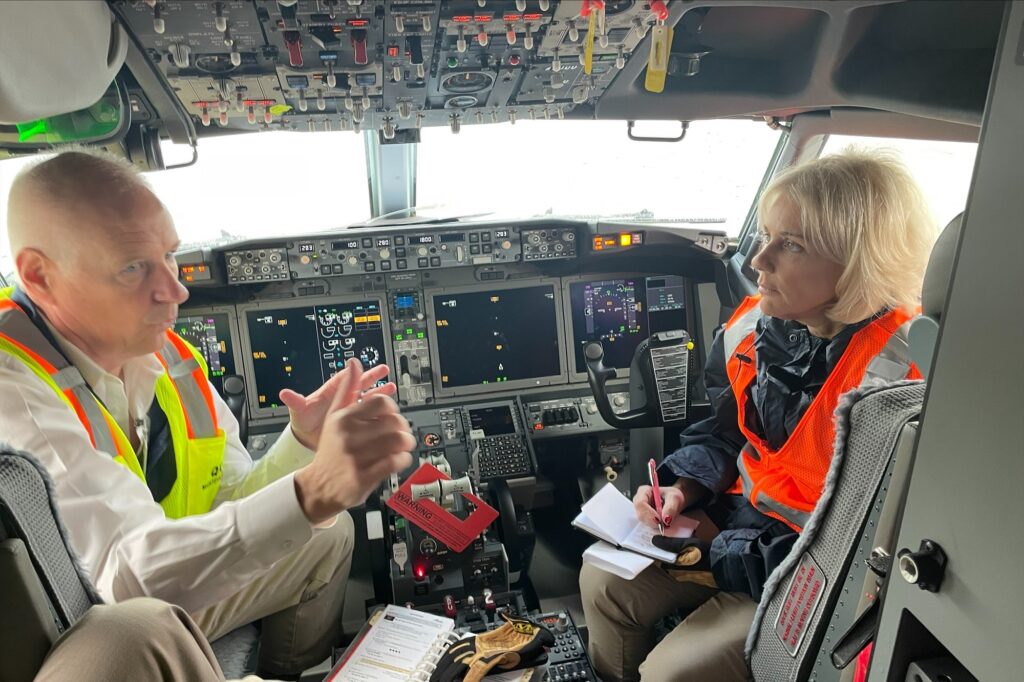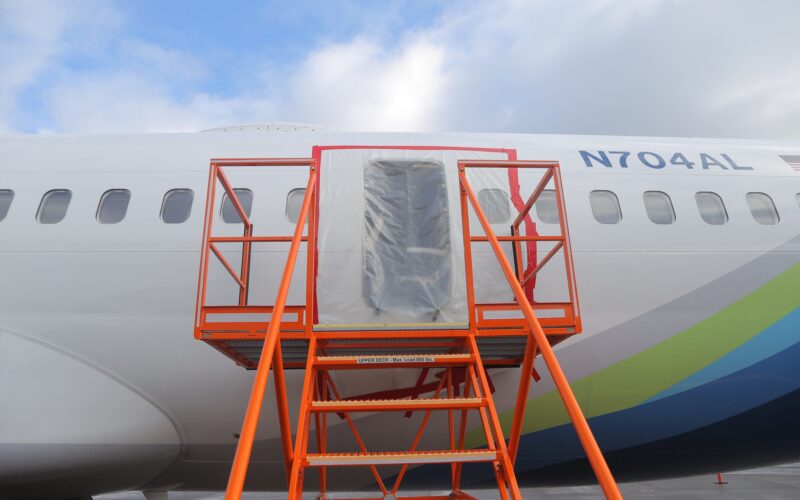United States (US) Senator and pilot Tammy Duckworth has written to the Federal Aviation Administration (FAA) to ask the agency to examine why crew aboard the Alaska Airlines 737 MAX 9 that suffered a door plug blow out on January 5, 2024, were unaware that the cockpit door was designed to open automatically during a rapid depressurization.
In a letter to FAA chief Michael Whittaker on April 4, 2024, Duckworth said that the “unknown, undisclosed feature” surprised the crew and resulted in an emergency checklist and a pilots’ headset being sucked out of the cockpit during the emergency.
News that the cockpit door had flung open by itself during the Alaska Airlines 737-9 door plug blowout incident came to light when the National Transportation Safety Board Chair (NTSB) Jennifer Homendy spoke with reporters at a press briefing on January 8, 2024.

Homendy said: “The cockpit doors flew open immediately and at this point the flight attendant in the forward portion of the aircraft was standing. The cockpit door flew open, hit the lavatory door. The lavatory door got stuck. She did attempt to shut the door three times. It eventually shut, but it did blow open during the explosive decompression.”
In her letter to the FAA, Duckworth declared that it is critical that the flight crew are “fully informed of all features on the flight deck”.
Duckworth said this was the third time that Boeing pilots have been kept in the “dark” on MAX aircraft.
‘Boeing’s failure to disclose this feature is chilling’
“Boeing’s failure to disclose this feature is chilling given its history of concealing 737 MAX information from pilots,” Duckworth wrote.
Citing the first example, Duckworth said in a press release that Boeing decided to “not include the Maneuvering Characteristics Augmentation System, MCAS, in the 737 MAX 8 flight manual, which left the flight crew on Lion Air flight 610 unaware of what was forcing their aircraft into a nose-dive”.
Secondly, she said that Boeing decided to “not inform airlines or pilots that the Angle of Attack (AOA) disagree alert aboard most 737 MAX 8 jets was nonfunctional”.
“This is dangerous, and the FAA must not view this latest omission in isolation. Instead, FAA should consider regulatory action informed by Boeing’s past pattern of deceptive conduct in developing and delivering the MAX series of aircraft and a strong commitment to avoid repeating past FAA mistakes in deferring to Boeing,” Duckworth wrote in her letter to the FAA.
Duckworth advised the FAA to work with the NTSB to discover why the Alaska Airlines crew were unaware the cockpit door would open during a rapid decompression.
Wishing a happy birthday to Senator Tammy Duckworth! 🎉@SenDuckworth is the first Thai-American woman elected to U.S. Congress, the first woman with a disability elected to U.S. Congress, and the first Senator to give birth while serving in office. #WomensHistoryMonth pic.twitter.com/WaefxbseLj
— When We All Vote (@WhenWeAllVote) March 12, 2024
“The FAA also needs to work with NTSB to consider whether other elements of the cockpit might need improvement in light of the previously undisclosed cockpit door design. Finally, as noted above, FAA must take into account that this is the third time Boeing has failed to disclose a flight deck feature to 737 MAX pilots,” Duckworth’s letter concluded.
In a statement to NBC in response to Duckworth’s call, Boeing said that it was “committed to continued transparency and sharing information with our regulator and operators”.
Senator Duckworth is a member of the US Senate Committee on Commerce, Science and Transportation (CST) and Chair of the CST Subcommittee on Aviation Safety, Operations and Innovation.
You can read the Senator Tammy Duckworth’s letter in full on her website.

